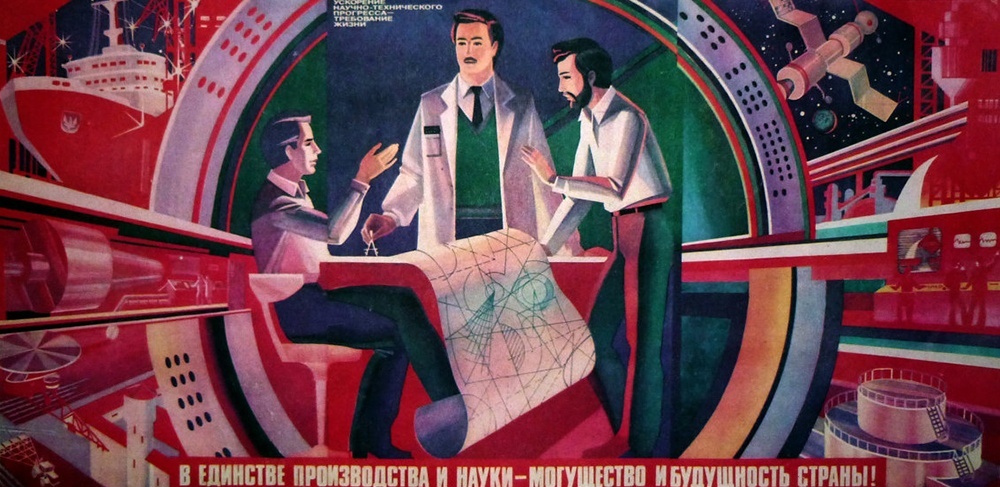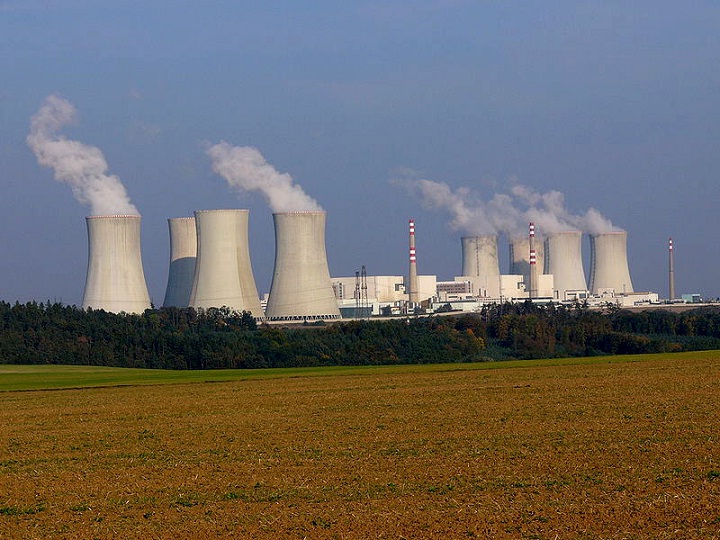Phys.org summary main bullet points:
Land and location: One nuclear reactor plant requires about 20.5 km2 (7.9 mi2) of land to accommodate the nuclear power station itself, its exclusion zone, its enrichment plant, ore processing, and supporting infrastructure. Secondly, nuclear reactors need to be located near a massive body of coolant water, but away from dense population zones and natural disaster zones. Simply finding 15,000 locations on Earth that fulfill these requirements is extremely challenging.
Lifetime: Every nuclear power station needs to be decommissioned after 40-60 years of operation due to neutron embrittlement - cracks that develop on the metal surfaces due to radiation. If nuclear stations need to be replaced every 50 years on average, then with 15,000 nuclear power stations, one station would need to be built and another decommissioned somewhere in the world every day. Currently, it takes 6-12 years to build a nuclear station, and up to 20 years to decommission one, making this rate of replacement unrealistic.
Nuclear waste: Although nuclear technology has been around for 60 years, there is still no universally agreed mode of disposal. It’s uncertain whether burying the spent fuel and the spent reactor vessels (which are also highly radioactive) may cause radioactive leakage into groundwater or the environment via geological movement.
Accident rate: To date, there have been 11 nuclear accidents at the level of a full or partial core-melt. These accidents are not the minor accidents that can be avoided with improved safety technology; they are rare events that are not even possible to model in a system as complex as a nuclear station, and arise from unforeseen pathways and unpredictable circumstances (such as the Fukushima accident). Considering that these 11 accidents occurred during a cumulated total of 14,000 reactor-years of nuclear operations, scaling up to 15,000 reactors would mean we would have a major accident somewhere in the world every month.
Proliferation: The more nuclear power stations, the greater the likelihood that materials and expertise for making nuclear weapons may proliferate. Although reactors have proliferation resistance measures, maintaining accountability for 15,000 reactor sites worldwide would be nearly impossible.
Uranium abundance: At the current rate of uranium consumption with conventional reactors, the world supply of viable uranium, which is the most common nuclear fuel, will last for 80 years. Scaling consumption up to 15 TW, the viable uranium supply will last for less than 5 years. (Viable uranium is the uranium that exists in a high enough ore concentration so that extracting the ore is economically justified.)
Uranium extraction from seawater: Uranium is most often mined from the Earth’s crust, but it can also be extracted from seawater, which contains large quantities of uranium (3.3 ppb, or 4.6 trillion kg). Theoretically, that amount would last for 5,700 years using conventional reactors to supply 15 TW of power. (In fast breeder reactors, which extend the use of uranium by a factor of 60, the uranium could last for 300,000 years. However, Abbott argues that these reactors’ complexity and cost makes them uncompetitive.) Moreover, as uranium is extracted, the uranium concentration of seawater decreases, so that greater and greater quantities of water are needed to be processed in order to extract the same amount of uranium. Abbott calculates that the volume of seawater that would need to be processed would become economically impractical in much less than 30 years.
Exotic metals: The nuclear containment vessel is made of a variety of exotic rare metals that control and contain the nuclear reaction: hafnium as a neutron absorber, beryllium as a neutron reflector, zirconium for cladding, and niobium to alloy steel and make it last 40-60 years against neutron embrittlement. Extracting these metals raises issues involving cost, sustainability, and environmental impact. In addition, these metals have many competing industrial uses; for example, hafnium is used in microchips and beryllium by the semiconductor industry. If a nuclear reactor is built every day, the global supply of these exotic metals needed to build nuclear containment vessels would quickly run down and create a mineral resource crisis. This is a new argument that Abbott puts on the table, which places resource limits on all future-generation nuclear reactors, whether they are fueled by thorium or uranium.


'as he states', there is no cost comparison to other forms of energy' downtimes due to maintenance. nuclear is centralized generation, taking it off to replace is a bigger deal than a single panel on a farm but the comparison has to be of all those decentralized repairs vis-a-vis the reactor on the same time scale. the case for photovoltaics is actually on his side because a 'lifespan' of the technology is not known or expected. however wind turbines are expected replaced on 1/3 of a nuclear plant's schedule.
260,000 tons is literally all of the waste. the US alone has put > 380 times this underground yearly since the 60s. i'd put it in some fancy warehouse and employ a whole nearby town in its maintenance but actual mediation philosophy has always been "we should put it underground and forget about it" vs. "that design will probably degrade in that timeframe" because neither side wants a thousand do-nothing jobs of watching nuclear material decay and checking for leaks. a functional society should just be willing to apply labor toward the issue.
the accidents paragraph is pure sophistry : riposting the undeniable fact that nuclear accidents' risk has been mitigated with improvements by claiming it cannot actually be modeled so Bro Trust Me the back of the envelope extrapolation is the only number we need 🥴 🥴 🥴 🥴
"In the short term, this problem can be addressed via dual use of solar thermal with natural gas." oops oh fuck someone spilled their fossil fuels in my anti-nuclear advocacy again! how does this always happen?
economic viability of extracting minerals is literally pegged to the price of the mineral. if uranium increases in price, at all, the amount of 'reserves' underground increases, but the author simply uses the current reserves at current prices for all figures regarding the 'extinction' of mineral supplies
all this talk of what is 'economical' does nothing to reveal what is possible, but everything about what looks good for the balance sheets of capital at the moment. and what do you know, the fossil fuel guys who run the west have it set up so they're still more 'economical' than nuclear, because nuclear capital is forced to pay costs privately that fossil capital has long since shouldered us with.